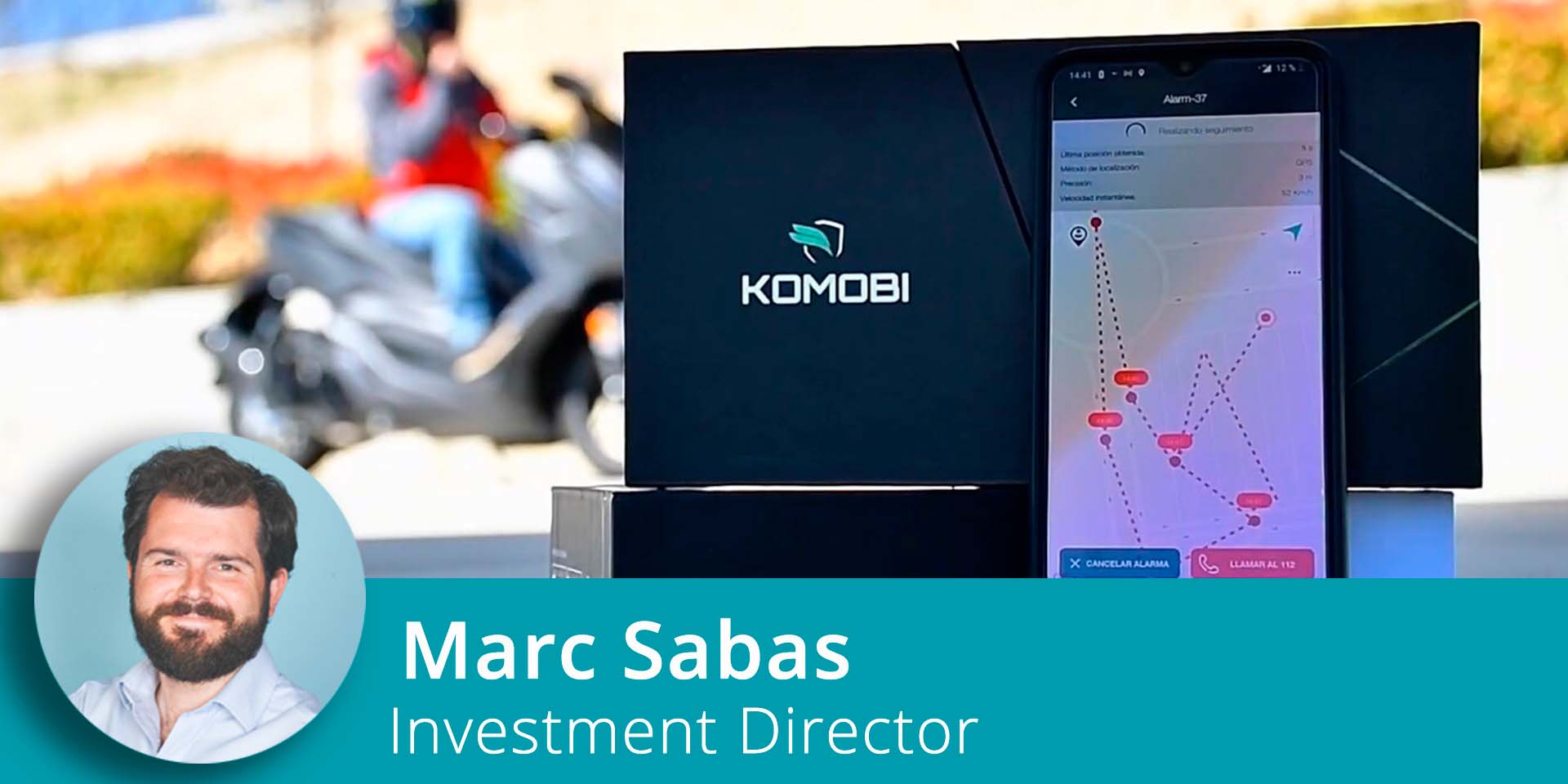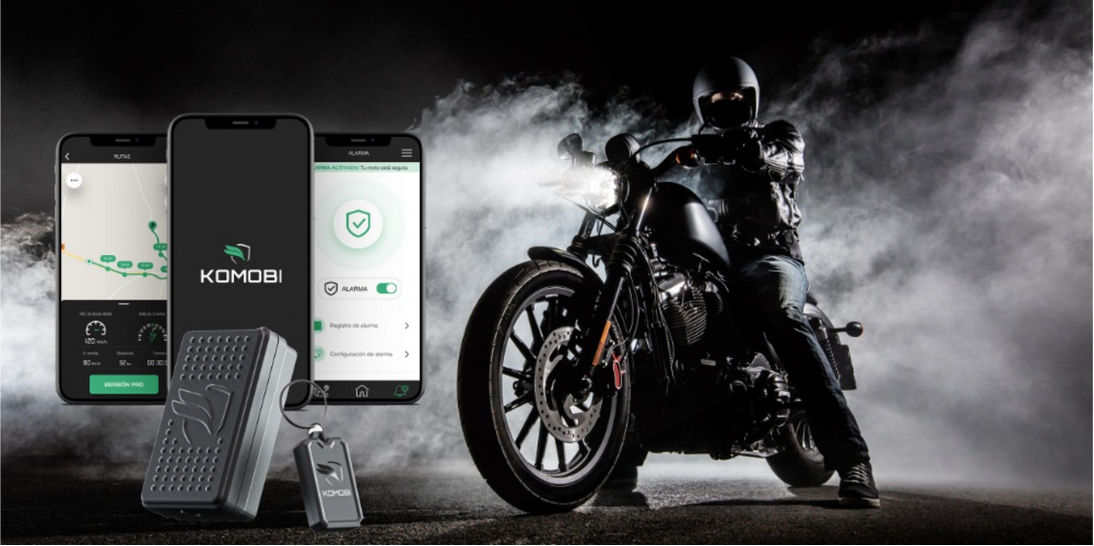
Last March, Ship2B Ventures led -through BSocial Impact Fund, the largest impact fund for startups in Spain, supported by the EIF, Banco Sabadell and AXIS (ICO)-, an investment round of 1.8 million euros closed by the impact startup LiveLink. This goal will help them to continue saving the greatest number of lives thanks to the reduction in response time between an accident and the arrival of emergency medical services.
Want to know how? Come and take a ride.
Easy Rider, anyone?
I have always had a soft spot for motorcycles. They evoke a sense of endless freedom to go anywhere, feeling the elements in your skin and leaving all worries behind. However, I started riding in my twenties once I moved away from home, since my parents did not allow me to own one as long as we lived under the same roof. I think this only further sparked my desire to own one. However, looking back I totally understand why they did that, and I thank them for it. Riding is a dangerous endeavor.
Why motorcycles do not have an eCall feature?
As of March 2018, an EU directive mandated that every new car sold in Europe must be equipped with the 112 eCall system. eCall is a potential lifesaver system that helps bring immediate help to the exact place where a car accident has happened. The faster the help given, the lower the probability to end in fatality or serious injury. Nevertheless, Powered-Two Wheelers (PTWs) were not included in the directive as there is no system available that can offer an effective eCall solution for PTWs. Why is that so hard?
This is due to the complexity in implementation of the eCall devices in PTWs:
- Number of false positives triggered: difficulty to identify just one trigger for PTWs (such as airbags in cars), as there are many instances where a PTW might trigger a false emergency event which could collapse emergency services.
- Rider dynamics: due to the likelihood of PTW-rider separation in an accident (75% of motorcycle accidents requiring an ambulance, the rider is further than 3 meters from the PTW and cannot respond), other options of eCall triggering must be investigated.
- Communications range: should the eCall system be distributed between the PTW and the rider (helmet, clothing, etc), the issue of the system’s communication range would need to be solved. This problem is further aggravated since eCall cannot depend on batteries that have to be re-charged externally.
- Hardware design: the reduced size of motorcycles, the absence of safe compartments and different PTW usage profiles require an adapted engineering for PTW eCalls: the risk of the eCall device being damaged during an accident is much higher than on passenger cars or on light duty vehicles.
- Pricing: the additional cost of an eCall device may be disproportionate for the price range of certain PTWs.
So, riders currently do not benefit from eCall. Is that a big deal?
The eCall facilitates the early detection and triggers actions to reach the victims in an accident as fast as possible. The first hour after an accident is the most critical time when most deaths and serious injuries occur. The delay in the arrival of the emergency service where the incident occurs has an exponential impact over the consequences for the victims:
- In 72% of PTWs accidents there are injuries since the chassis is the rider’s body. This contrasts considerably with the data on car accidents, in which the number of injured is just 11.5%.
- The response time to an accident of the emergency services in Spain ranges between 25 and 38 minutes (according to data from the National Road Safety Observatory). Research indicates that reducing the time between the crash and the arrival of emergency medical services from 25 to 15 minutes could reduce deaths by one third.
- A study carried out by the Royal Automobile Club of Catalonia (RACC) on the state of medical emergencies in Spain reveals that 66% of deaths in traffic accidents occur in the first 20 minutes after the accident, so a proper emergency care can reduce the number of deaths by 11% and the number of people with disabilities (serious injuries that can lead to life-changing consequences) because of road accidents by 12%.
- Therefore, the number of road deaths in Europe annually that would be spared would range between 2,500 and 7,500, while the number of serious injuries that could be lessened would be between 30,000 and 45,000.
There is a clear market pothole across PTW riders to increase their safety and emergency assistance. Enter Komobi.
Komobi, evey rider’s guardian angel on the road
LiveLink Motor is an IoT platform, specialized in PTWs, that develops products with three main characteristics: (1) contributing to save lives on the roads, (2) capable of differentiating between vehicle and rider and (3) connected and integrated with various API.
Komobi, the first LiveLink Motor’s product, consists of:
- A physical IoT device installed in PTWs plus a keyring dongle. The IoT device has a microchip and a cable connected to the internal battery and the dongle helps to identify the rider. The device collects over 170k data points per user per hour, one of the most robust datasets for PTW globally.
- A front-end app for customers: it tracks connected device features such as real time GPS, impact, movement and theft alert, history of riding routes, optimum tilt, hot map and the eCall capability.
- A back-end platform to monitor all connected PTWs and process all potential accidents through local emergency services.
When an accident is detected by a Komobi device, an alert arrives in LiveLink’s central operations who have access to everything that has happened leading to the event. The team assesses the situation, try to make contact with the rider for up to 3 minutes and if unsuccessful they contact emergency services pinpointing the exact place, location of the vehicle and rider, level of potential damage and any other useful data points they have.
Traction so far
Komobi’s commercial launch started in November ‘20. Since then:
- Sold over 11,000 units across B2B, B2B2C AND B2C
- Reached over €1m in revenues during their first year, and growing 10-20% month on month
- Attended over 800 accidents, in 20 occasions reached out to emergency services thanks to LiveLink (no one else had called), 3 of those calls where critical to prevent major injuries or deaths and one live was saved as a consequence of LiveLink’s actions
- 95 physical points of sale in PTW dealerships/repair shops in Spain through 66 re-sellers
- First B2B partnerships signed with various top B2B names across mobility and fleet management players
Why we invested in LiveLink Motor
We plan to help LiveLink’s team in the following areas during the next 12 to 15 months:
- Strengthen the management team in key areas such as finance and B2B sales as well as hiring various junior roles across tech, marketing and business development
- Build a robust B2B pipeline across resellers, vendors and fleet managers
- Build resilience across the supply chain to ensure production rates and fulfilling large orders
- Expand internationally across key markets in Europe, starting with the UK

We are humbled that the LiveLink team has partnered with us to lead their seed round, but we are most excited about the capacity to make a deep and lasting impact across the motorcycle category, reducing the probability of fatalities and serious injuries at a global scale. We look forward to riding this partnership into the sunset.
If you have a purpose-driven startup in the climate, health or education space and are looking for investor partners, please get in touch with us!

